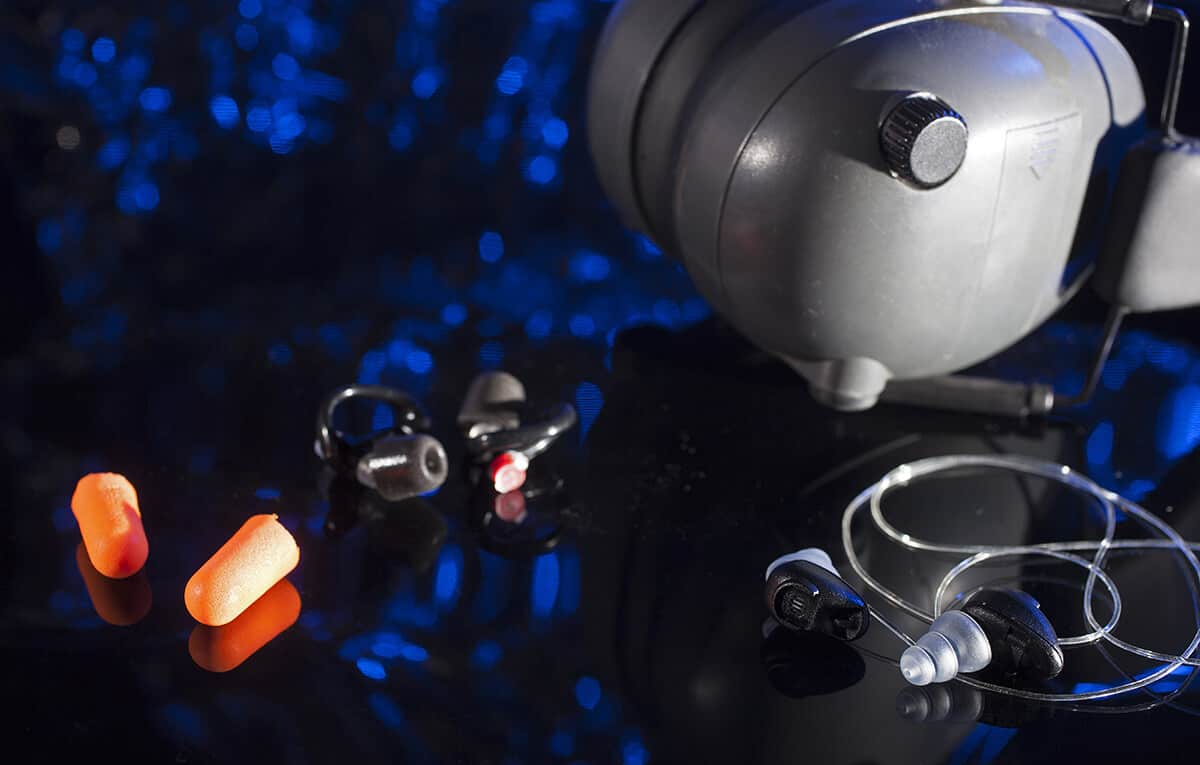Hearing Protection
Hearing protection is a must in today’s fast-paced, noisy world. Most of us encounter sounds on a regular basis that have the potential to damage our hearing, so it’s important that we take the necessary measures to be able to protect our ears while still enjoying the activities that might damage them.
When To Wear Hearing Protection
Environmental sound is measured in decibels A-weighted (dBA). It has long been established that sound reaching as little as 85 dBA (about the sound level of a lawnmower) can cause permanent hearing damage after about 8 hours of exposure. For every additional 3 dBA of volume, the safe period of exposure is cut in half. For reference, consider the following:
- 85 dBA - 8 hours
- 88 dBA - 4 hours
- 91 dBA - 2 hours
- 94 dBA - 1 hour
- 97 dBA - ½ hour
- 100 dBA - 15 minutes
- 103 dBA - 7 ½ minutes
- 106 dBA - 3 ¾ minutes
You can see how quickly the rising level of sound becomes dangerous even for short periods of exposure. A typical motorcycle produces about 100 dBA of sound, meaning that any ride longer than 15 minutes will cause some amount of permanent hearing loss. Gunshots can cause instant hearing loss for the person operating the firearm.
The best practice is to wear hearing protection anytime you’re around sound above 85 dBA for any amount of time. If you’re unsure of the sound level in an environment, SPL (sound pressure level) meter apps are available for smartphones. Simply check the level of the environment and wear protection if the meter exceeds 85 dBA.

Types of Hearing Protection
The two main types of hearing protection are earplugs and earmuffs. Where earplugs are inserted into the ear canal, earmuffs fit over the ears. Both are useful in a variety of situations, though for most of us it is not practical to carry earmuffs everywhere we go. Those who wear eyeglasses should also consider that the protection offered by earmuffs can be reduced as the continuity between the surround and the head is interrupted by glasses, reducing their effectiveness. A set of earmuffs rated to provide 30 dBA of attenuation may offer significantly less protection when worn over glasses.
Disposable Earplugs
Disposable earplugs are intended to be used once and then discarded. They are typically made of foam, which you are meant to compress with your fingers, insert into your ear canal, and then allow to expand to seal off your ear canal from sound. While they are easy to transport and are effective at blocking sound, they reduce high frequencies much more than lower ones. This makes sound seem unnatural, which can be unpleasant if you’re using them to listen to music, and can make speech more difficult to understand. They can cost less than $1.00 per pair. For those who don’t regularly encounter loud sounds, they can be a good option to carry with you just in case you encounter unsafe sound levels.
Reusable Earplugs
Reusable earplugs tend to cost around $15–30 and can be used over and over again. They tend to reduce frequencies more evenly than disposables, and typically attenuate sound by about 15 dBA. They’re a good choice for those who frequently attend concerts, but may not provide enough protection for motorcyclists, gun enthusiasts, and others who are dealing with sound levels above 100 dBA.

Custom-Molded Earplugs
Custom-molded earplugs are the best earplugs available. We take a foam mold of your ear canal, and then a set of silicone plugs is created that fits you perfectly. Attenuators are available at a variety of decibel ratings, so depending on the activities you’re engaging in, you could have multiple sets of attenuators to provide the appropriate amount of protection. Because they attenuate sound so evenly across the frequency spectrum, custom-molded earplugs are the best choice for musicians, but they are also a good choice for motorcyclists, gun enthusiasts, and others who want a comfortable, effective option for long periods of wear.
If you’re concerned that you may need more effective hearing protection in your life, make an appointment with us for a hearing test today. We can tell you whether you have any hearing loss and discuss with you your options regarding hearing protection going forward.
